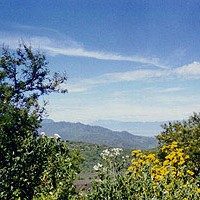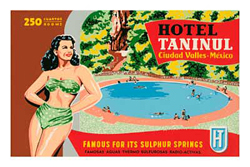 There is increased demand for building lots in the Bay of Banderas, continuing up the Pacific coastline. The question of private versus ejido land comes up more frequently. There are cases where unsuspecting foreign buyers are “talked into” buying ejido land in the name of a prestanombre (straw party). In addition, the foreigner is asked to pay all the expenses of the process to try to privatize the land so that it sold. There is not always a successful outcome on behalf of the would-be purchaser. Let’s discuss the important of ejido land in Mexico.
There is increased demand for building lots in the Bay of Banderas, continuing up the Pacific coastline. The question of private versus ejido land comes up more frequently. There are cases where unsuspecting foreign buyers are “talked into” buying ejido land in the name of a prestanombre (straw party). In addition, the foreigner is asked to pay all the expenses of the process to try to privatize the land so that it sold. There is not always a successful outcome on behalf of the would-be purchaser. Let’s discuss the important of ejido land in Mexico.
The original concept of the ejido system (public land, common) was to make an equitable distribution of land to the campesinos (peasant, farmer, or countryman) who labored on it. The Agrarian Reform Act of 1915 and the Constitution of 1917 created the ejido system as a uniquely Mexican form of land ownership.
This body of law, la Ley Agraria, gave the federal government the right to expropriate land and redistribute it to the communal groups, the ejidos. The group members or ejidatarios were each given the use of a parcel of land that could pass to heirs but could not be sold, returned, or used as collateral for a mortgage.
The ejido system remained unchanged for most of the twentieth century with some presidential administrations viewing it as a school for farmers and other administrations viewing it as a way to maximize use of land through collective framing. Over the years, as the parcels of land were handed down and divide repeatedly among heirs, the majority of ejidatorio holdings shrank to below subsistence level with average holdings or parcels of two hectares (hectare: 2.48 acres) or less.
The ejido system was radically reformed in 1992 with the creation of a process for privatizing the land holdings. Ejidos were given the opportunity to regularize (privatize) the land and grant titles to members for their individual parcels so that privatized lands could be bequeathed to heirs, rented, used as collateral, and sold to other members. The expectation was that this reform would result in farmers buying additional parcels to increase their holdings.
Ejido land must be fully privatized before it can be sold to outsiders. One the title to private property has been issued, the first sale to anyone must include the right of first refusal. The ejido land which has been privatized can be sold to non-ejidatarios only if all members with the right of first refusal, agree to the sale. This process is known as derecho del tanto (right of first refusal), and includes notification of the intent to the ejido president, and the comisario. The comisario provides public notice of the intended sale. If, after thirty days, no other member comes forward to purchase the property or raise an objection, the sale may proceed.
With members and their heirs scattered, a major challenge to selling or regularizing ejido land is simply locating all the owners. This regularization requires a lengthy application process during which all members of the ejido must agree on privatization, as well as the parcels of land have to be defined. Undisputed titles have to be established. Even if the ejido land has been fully regularized, the group may maintain communal ownership of community development land as well as communal land for parks, markets (mercados), town squares (plaza, zocalo).
The History of Ejido Land
Before 1915, large haciendas (estate, large farm) held most of the land. 1% of the population owned 90% of the land. In 1915, the Agrarian Reform Act created the framework for redistribution of land.
In 1917 the new Constitution created the ejido system. Villagers could petition the government to expropriate tracts of land larger than 150 irrigated hectares or 200 rain-fed hectares to create an ejido. Under this system, the state owned the land and granted ejidatarios the rights to the parcels. The ejidatario were to work the parcel in order to maintain ownership. The parcel could be passed to heirs, but it could not be sold or pledged as collateral. The coumunidad agraria was also created. The coumunidad agraria was similar in form and function to the ejido, but was made up of land which farmers had a claim to before the land was granted to a hacienda.
In 1930, the land census study showed that 13% of land was held in ejidos. During the period of 1934-40, President of Mexico, Lázaro Cárdenas, 18 million hectares were expropriated, twice the amount of land expropriated since the revolution. In 1940, the land census showed that 47% of land was held in ejidos.
In 1970, President Echeverría’s administration added 17 million hectares to the ejido land.
In 1976, President Portillo’s administration added 1.8 million hectares to the ejidos.
In 1980, the land census showed that 31% of ejidatarios and 40% of private framers held parcels of less than 2 hectares. More than half of all ejidatarios and private farms held parcels of less than 5 hectares.
In 1992, Ejido reform ended land expropriation and redistribution. Ejidatarios could obtain titles to their parcels. The parcel may be sold to another member of the ejido or an outsider, rented, mortgage, pledged as collateral and passed on to heirs. Ejidatarios were not required to work the land to maintain ownership. A process was created for privatizing land which could then be sold outside of the ejido.
Currently an estimated 48% of Mexican land is in ejido ownership. As urban areas grow in size and resort development increases along coastlines, some ejidatarios find themselves to be owners of prime development land.
It cannot be overemphasized that buyers should never make an informal deal hoping that the land will be privatized. Nor should they take someone’s word that ejido land has gone through the privatization process.
In 1999, 150 homeowners, mostly Americans, were evicted en masse from a development called the Baja Beach Club of Punta Banda, Baja. Their homes were built on disputed former ejido land that had not been privatized. When the original owners of the land disputed the legality of the ejido’s formation and won their case before Mexican Supreme Court, the homeowners were evicted and received no compensation for their former homes.
Real estate professionals in Mexican caution against purchasing ejido land through an informal “promise” or “for a good price.” There are many stories of foreigners who thought they had clear title to former ejido land and were later surprised by a Mexican national knocking on their door declaring ownership of land on which the foreigner’s home was built.
The best advice is to avoid ejido land altogether until its privatization has been well –established.
There is also a form of ownership named co-propiedad joint ownership. This is joint ownership of private property within a family. It assures a share of the family property for every descendant. Clearing title to a property which as been in the family for several generations can be a big task. For example: if three brothers have co-propiedad ownership of land and each has five children, there are 15 co-owners in the second generation. If each of the 15 children have five children in the co-ownership, the number of co-owners increases to 75 in the third generation. If each of the 75 grandchildren have three children, the number of co-owners increases to 225 in the fourth generation. Each of the co-owners has a right of first refusal if the land to be sold is jointly owned. It is obvious by the fourth generation that finding all the co-owners is the first challenge in obtaining an undisputed title.
Some Mexican nationals acquire fideicomiso trusts to hold their property for the family. This form of ownership is the same as the fideicomiso trust which foreigners are required to have in order to own property in the restricted zone. The fideicomiso trust also functions as a will and heirs are named to succeed the primary beneficiary of the trust.
Harriet Cochran Murray, Director of Cochran Real Estate, is a seasoned Real Estate professional both here in Puerto Vallarta, Mexico and in the United States. Harriet has served in many capacities as a board member for the local Real Estate Association AMPI (AMPI is the national association of real estate professionals). She is also a member of FIABCI, NAR in the United States and a proud member of CIPS (Certified International Property Specialist), a designation of NAR. Harriet’s expertise and experience in the Real Estate and especially in the Mexican market makes her Viewpoint blog articles both informational and intriguing. Harriet is a Buyer’s Agent who specializes in getting the best deal on the right property for her clients. Click HERE to view Cochran Real Estate Listings.



